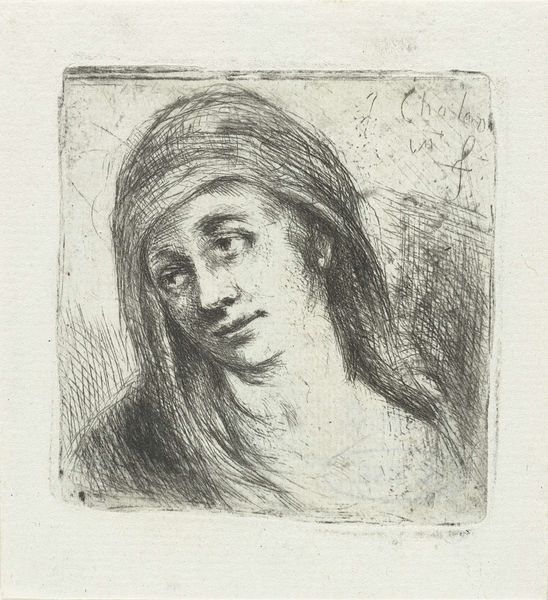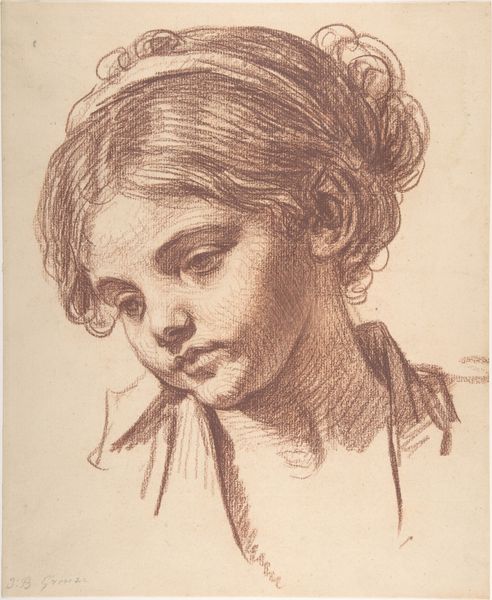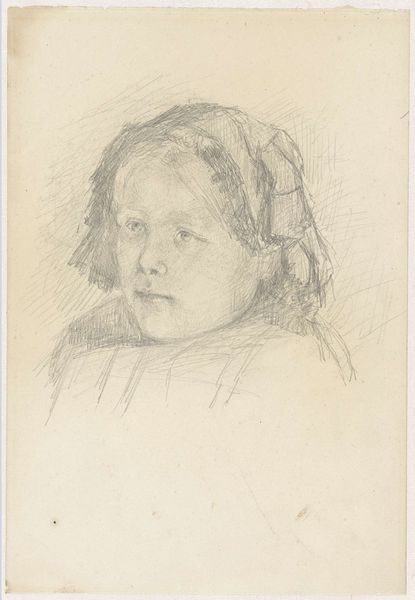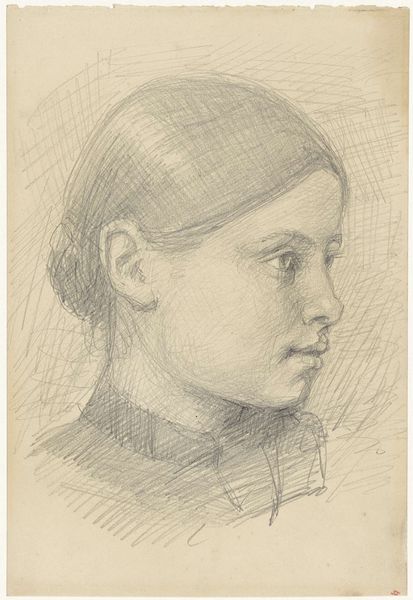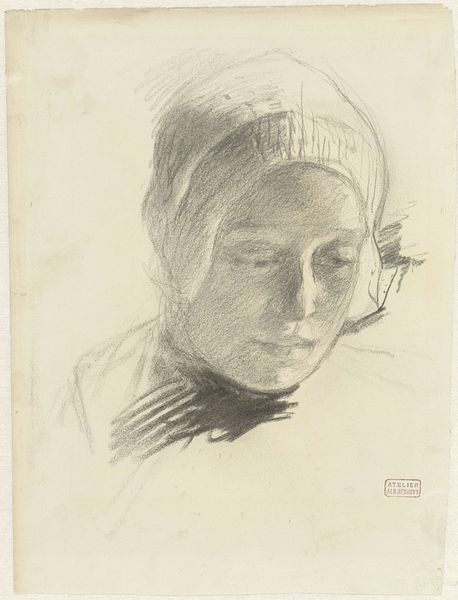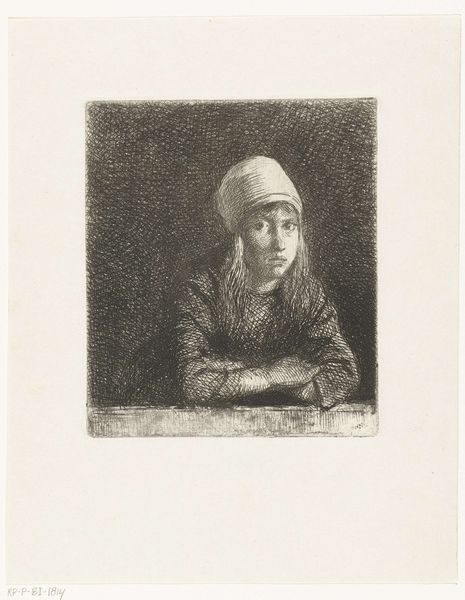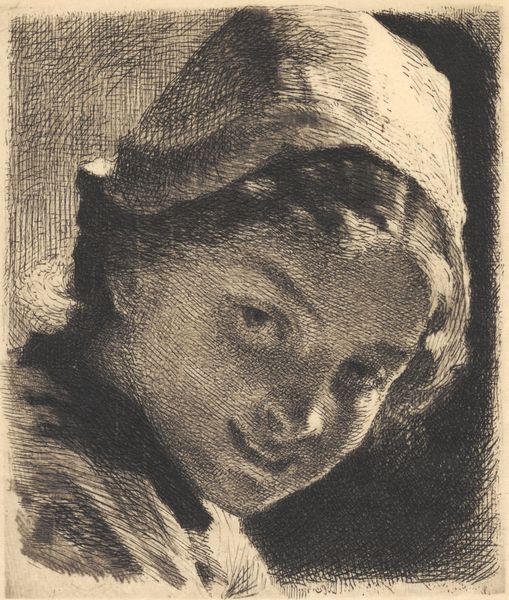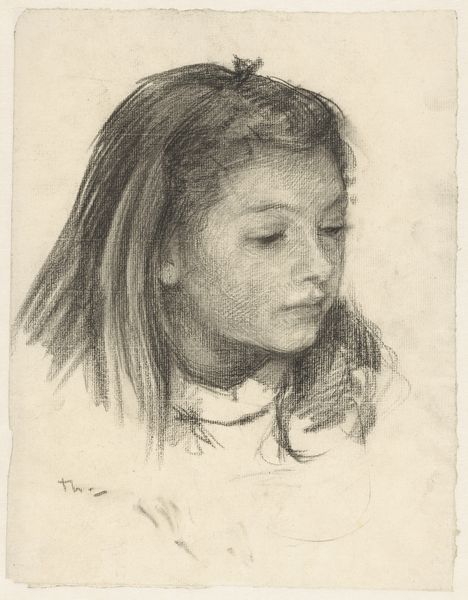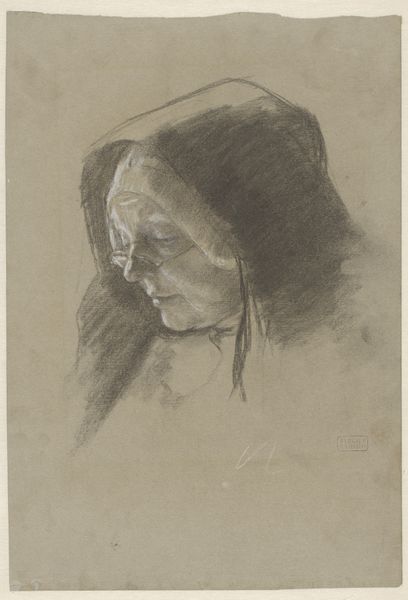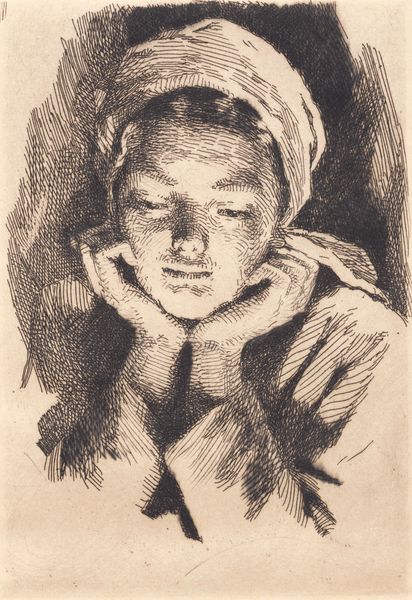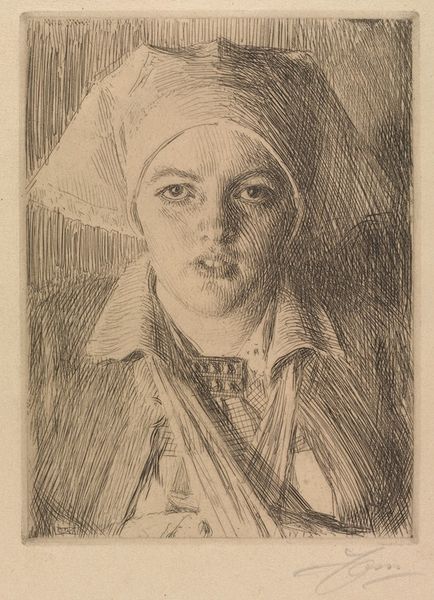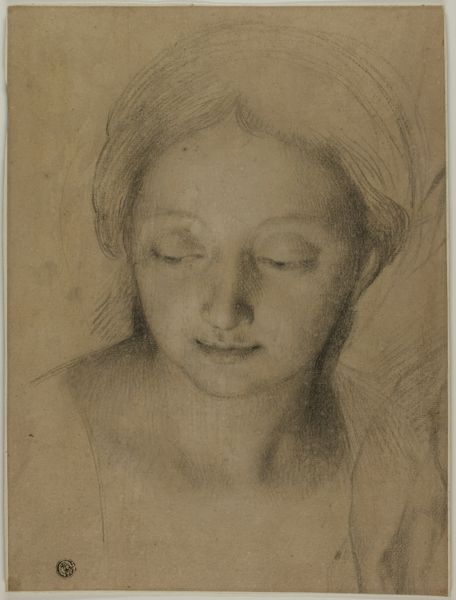
drawing, pencil
#
portrait
#
drawing
#
pencil
#
history-painting
#
academic-art
#
realism
Dimensions: 24 3/4 x 18 3/4 in. (62.87 x 47.63 cm) (image)
Copyright: Public Domain
Editor: Here we have an intriguing pencil drawing entitled "Portrait of a Young Girl," dating back to the 19th century. The artist is anonymous, and the artwork is currently housed at the Minneapolis Institute of Art. There's a delicate softness to it; the shading creates a dreamy, almost melancholic mood. How do you interpret this work within its historical context? Curator: It's easy to appreciate the skillful realism of the piece, and it's also important to examine its historical milieu. The rise of academic art in the 19th century established a formal hierarchy in the art world, dictating specific styles and subjects. Portraits, particularly idealized depictions of women, were highly valued. Do you think this work challenges or reinforces existing power dynamics of the time? Editor: I hadn’t really considered power dynamics! I was mainly focused on her rather sad, but calm expression. But you are right, a lot is missing here, the drawing is simple but very efficient in technique. Would a piece like this likely have been commissioned, or perhaps been an exercise in academic art? Curator: Precisely. Consider also how institutions like museums and academies shape artistic taste. Academic art was promoted and exhibited widely, reinforcing its importance in society. This drawing likely reflects that influence. Who was deemed worthy of depiction? Why are portraits often presented as objective records rather than subjective interpretations? Editor: That's fascinating. So, while the drawing appears straightforward, it's actually embedded within a complex web of social and institutional forces that influence what art gets made and valued. I’m left thinking about whose stories weren’t told during that period, due to gender and class constraints. Curator: Exactly. Reflecting on the omissions, what's *not* present, can be as insightful as focusing on what we see. This approach reveals how power operates within the art world. It is about constantly re-evaluating, who holds it, who is portrayed, how, and why.
Comments
No comments
Be the first to comment and join the conversation on the ultimate creative platform.
